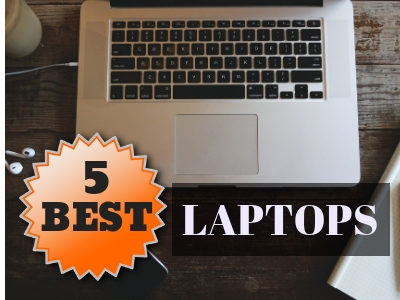
Quick Links:
- Dell XPS 13
- MacBook Air
- Huawei Matebook 13
- Asus Zenbook UX333
- HP Chromebook X2
Part of a professional’s job is to work on reports, make presentations, and prepare important documents. For some, it may include creating designs, layouts, and various models. This is especially true in the business sector. Due to high work density, working professionals have become more dependent on computers. Arguably, a computer is the most important business tool. It is used in every and all aspects of business operations, from product creation, data management, marketing, and accounting. Given the diverse use of computer programs, management is very keen on selecting the model and capacity of the device that employees use in the office.
Most work is done digitally. Office desktop computers are the backbone of every business in America. Aside from its accuracy, it accomplishes work fast and makes all work easier. You can find a computer on every desk in every office in the country. However, they are bulky and take up so much space. Business owners invest a significant amount of money in this technological resource. Yes, desktop computers are cheap. They carry the promise of durability, reliability, performance, and power. Plus, repair and spare parts are generally more accessible. But due to the “on-the-go” work culture that dictates most American work lifestyle, a laptop is seen to be a more practical choice.
Aside from taking less space, laptop computers are less complicated to operate. They do not need traditional wirings and every component are integrated into one tool. With the processor, RAM, hard drive, monitor, keyboard, and trackpad tightly packed together, you will get a tidier desk. Most importantly, laptops have a built-in battery so you can take your work anywhere. Today, mobility is the primary objective Laptop computers have completely changed office dynamics. In the present competitive work culture, you need to be on top of everything. Having a reliable device is the first step in making sure that you remain efficient and competent.
BUYING A LAPTOP? HERE ARE THINGS YOU SHOULD CONSIDER
Buying the perfect laptop will ultimately depend on your needs. There are different kinds of laptops out there and this might cause more confusion than be helpful. Some are manufactured to cater to a specific niche. Laptops are compact enough to bring with you, yet its superior versatility is a dependable tool to run various demanding applications. You can always use it for serious work, or note-taking during class. Laptop computers have survived even with the popularity of tablets and smartphones. Most people realize that laptops are a more superior tool than hand-held devices. From typing research papers, video editing, and even gaming, laptops are always a better choice.
If you are into gaming, then you can opt for a gaming laptop. While if you are a writer, then you can settle with one that has a more inferior intel core processor. This way, you can save money and be completely satisfied with your purchase. For this reason alone, you need to seriously consider what you need your laptop for before you pick your choice. This article will help you navigate the confusing, and often, the mind-boggling process of choosing your device.
First of all, you need to settle on a platform or operating system. Arguably, the platform of your choice will determine the specs, the features, especially, the price of the laptop. There are three main operating systems that are dominates the market today, namely, Windows, Chrome OS, and macOS. If you are not familiar with any of these, you will surely have a hard time deciding what to get. But having an overview of both the strengths and weaknesses of each of the platforms should help identifying your personal preference.
Windows Operating System
Windows Operating System or Window OS is a computer operating system developed by Microsoft Corporation. It was specially designed to run personal computers, better known as desktop computers today. The first-ever version of the Windows OS was released in 1985 and has impressively evolved. Its current version is Windows 10, the Microsoft’s flagship OS pays homage to its predecessor. It promises its loyal patrons “Security, durability and great design.” Windows has also integrated new features that appeal to the new generation of tech users. New laptops have a touchscreen, which adds seamless tool navigation and search.
Watch: First Look at Windows 10
Since its launch in 2015, Windows 10 users are greeted with various improvements. Windows laptops now come with Cortana voice assistant. This digital helper will make your day-to-day tasks easier, from answering phone calls, send emails, search for files, and create reminders, to name a few. You can even use a stylus and make handwritten notes or make graphic designs on your Windows laptop. That being said, Windows 10 laptops are best for students, those in the business sector, researchers, and writers.
Chrome OS
Watch: Chrome OS Guided Tour
In response to the growing Google users, it launched the Chrome Operating System (Chrome OS). The operating system is designed to cater every internet users and for various web applications. Users can expect ease-of-use, security, and compatibility around the key tenets of both online and offline applications. Chrome OS is specifically for intensive we users and you get only get a web browser which integrates a media player, as well as a file browser. Those who are heavy users of Google services, Chromebooks is the best choice. You can easily access your Google Drive, edit documents on One Drive, and collaborate with a team through Google Drive Collaboration.
For netbook and laptop users, Chrome OS is a logical step up from the basic features that come with laptop computers out of the box. Among the many advantages that come with the operating system are its lightning-fast web browsing and internet speed. Google claims that Chromebooks load any website in just eight seconds. Your Chromebook will run automatic updates the moment they become available. It is also equipped with sandboxing technology which isolates invasive malware and potential threats. Google is working on integrating a free service, Chromoting, which will allow Windows and Mac users to access their current device remotely.
macOS
Every Mac device is powered by macOS, the exclusive operating system by Apple Technology. macOS is unique, and it lets users do a lot of things with their MacBook which you cannot simply do with other laptop computers. Both Apple’s hardware and operating system are specially designed to run on Apple computers. The operating system itself comes with an entire suite of intricately designed applications. You can access your documents, photos, videos, and memories when you log in on iCloud. This is a plus for iPhone users, who can easily sync their phone with their MacBook.
Apple is invested in designing secure and easy to use devices. Because when everything is simple, you can do anything with it. The intuitive gestures, and touchpad shortcuts, you can access your entire device with a few taps and stokes of a finger. Plus, you do not need to worry about compatibility because Mac runs Windows applications, Chrome browser, and most importantly, Microsoft Office. The built-in apps native to your Apple device, you can take full advantage of your Mac’s performance and features. With the quest to make Mac accessible to everyone, Apple has invested in its Accessibility features to cater those who are visually impaired, hearing impaired, with restrained mobility, and even with learning disability.
All that being said, you are now ready to choose the physical aspects, as well as the processor of your new gadget.
Size
Size is an important factor to consider especially if your primary concern is convenience and portability. Some people want their laptop to have discrete graphics for video editing and running games, and some prefer portable laptops. No one size fits all. Usually, the size of a laptop starts at 11 inches and go all the way to 17 inches. Some laptops are only available in three sizes, 11, 13, and 15 inches like the Apple MacBook. On the other hand, most brands like HP, Dell, Asus, and Acer start with 12 inches and go up to 17 inches. Here is a breakdown of the different sizes available in the market today:
Watch: Best Laptop Screen Size? 13 vs 15 vs 17
- Ultraportable with the following dimension: 9-13” inches x 8-9” inches x .2-1.3” inches x <1” inch and would usually weigh 2-3 pounds
- Ultrabook or Chromebook with the following dimension: 9-13.5” inches x 8-11” inches x <1” inch and would usually weigh 2-3 pounds
- Thin and Light with the following dimension: 11-15” inches x <11” inches x .5-1.5” inches and would usually weigh 3-6 pounds
- Desktop replacement with the following dimension: >15” inches x >11” inches x 1-2” inches and would usually weigh >4 pounds
- Luggable with the following dimension: >18” inches x >13” inches x >1” inch and would usually weigh >8 pounds
If you prefer portability, then you should consider smaller sized lightweight laptops. However, keep in mind that smaller machines do not support the same processors for graphics as compared to larger sized ones. The ports are also less robust compared to their larger counterparts. If you need a larger display or standalone graphics power, the larger ones are for you. Rather than a laptop, you can also resort to notebooks if you want something that offers power and portability. A larger sized laptop is recommended if you want a longer battery life on your device.
Screen Resolution
For those who enjoy watching movies and playing computer games, a higher-resolution display is more appealing than those with lower resolution. Working on a laptop with a clear display is more motivating than looking at a grainy and blurry screen. It will strain your eyes and will significantly affect productivity. Laptop screens are made up of dots called pixels. When the display panel is equipped with more pixels, the more detailed the display is. Photographers and videographers prefer a laptop that offers better color accuracy and wider color range. If you are a gamer, on the other hand, the refresh rate on the display is what you will be focusing on. If your laptop has a faster refresh rate, it guarantees a competitive advantage in online games since it provides more accuracy and faster response.
Most laptops carry 1366 x 768 screens, which is in the lower end compared to the high-resolution panels which carry 1920 x 1080 pixels. Videos and photos in this resolution look sharper because the pixels are smaller. You can see details without them being grainy. There are also laptop models that carry a resolution higher than 1920 x 1080 pixels and can reach up to 4k resolution. Display panels on these device is at least 2450 x 1440 pixels. There is a downside, though. They tend to use more power, and could ultimately affect your laptop’s battery life.
Touchscreen or Non-touchscreen
Another thing to consider when it comes to displaying panel is whether you like yours with a touchscreen or with a non-touchscreen. Hybrid computers have become more popular among young laptop users artists, and graphic designers. If you want your laptop to double as a tablet, the hybrid laptops could be your best option. Before choosing between a touchscreen or non-touchscreen, you must weigh the advantages and disadvantages of having either of the two. One advantage of a touchscreen is it makes navigation around applications easier. On the other hand, touchscreen laptops have disadvantages, namely:
More expensive. It is more expensive compared to a standard laptop display. Clicking can be frustrating too since the buttons or links can be quite small. Unlike a tablet where you can zoom in, most laptops with touchscreens cannot. This makes the touchscreen feature more like a chore. You will have difficulties in tapping the button, and navigation can be tricky.
Heavier. Because of the touchscreen feature, hybrid computers can be heavier.
Poor battery life. It uses too much power for the touch feature. As a consequence, battery life can be less dependable. It can only be used for fewer hours as compared to its non-touchscreen counterpart.
Glossy screen. Touchscreens are usually glossy. If you constantly have headaches, then this will be bad for you. Flossy surfaces reflect light and thus have poor viewing angles. When light is reflected, it would be difficult to view the screen.
Keyboard quality
The keyboard is the largest source of information input in a computer. A laptop with a good quality keyboard increases productivity especially if your job requires you to do a lot of paperwork. And the comfortable keyboard is recommended for long typing sessions. However, if you are a gamer, you are inclined to find a laptop that has a durable keyboard.
A comfortable layout is the one we most recommended keyboard option. This will be extremely helpful when you spend most of your time typing. If the keyboard layout is not ideal, then you will likely feel a lot of pain. Long hours of typing can strain your fingers, hands, and your wrist. Carpal tunnel syndrome (CTS) is a common medical condition that plagues the modern workplace. It causes pain, tingling, and numbness in the hand and the arm. The carpal tunnel is a narrow passageway of ligament and bones located at the bottom part of the hand. It is where the median nerve and tendons that allow the fingers to bend are housed. CTS occurs when the median nerve is deliberately pressed and squeezed at the wrist. There are carpal tunnel keyboard readily available in the market which promises pain-free typing all day, every day.
Another consideration to take note of is the keys’ travel. There is a surprising sophistication to how keyboards are designed and manufactured. The travel, also known as the throw, describes “how far the keys go down.” This is an important factor when choosing your laptop. Modern laptops considerably have less throw compared to old designs.
For those who prefer working at night or in dim environments, a backlit keyboard should be something to consider. Usually, this feature is being taken for granted. Because laptops nowadays go for lightweight and being small, the consequence of this is usually bad quality keyboards for long hours of typing. Gaming laptops still deliver since having a good quality keyboard is essential for competitiveness.
CPU
Processors are the brain of the laptop. It is the system which dictates the processes and it is the one that executes commands to make the laptop work as you intended. It is especially essential for opening files, browsing, and all the things you do on a laptop.
When it comes to processors, an Intel Core processor offers the best performance. It is good for multitasking and multimedia tasks. Core i3 systems are usually used for notebooks while core i5 makes up the majority of the mainstream computers. For the best performance, getting a laptop that has an Intel Core i7 processor, a multi-core processor, is recommended. This processor is ideal for multitasking. It is suitable for those who frequently use music and photo editing software. While dual-cores, the core usually used in the average laptop, are good at multitasking, their performance is not enough for music and photo editing tasks. The higher the score, the better it performs when running editing applications.
The downside of i7 vases systems, however, is that machines which have this processor heat up easily and quite intensely. While larger laptops are equipped with an Intel Core i9. Core i9 laptops can even rival desktops in terms of performance. Expectedly, they are more expensive.
If you are a gamer, Ryzen mobile CPUs are for you. They are usually paired with Vega graphics chipsets which is better for gaming than Intel’s graphics.
Watch: The World’s Best Gaming Processor
RAM
Random Access Memory or RAM helps your computer process series of information. A 4GB RAM is sufficient for basic tasks you do with your computer. However, if you are a gamer, you might want to get a machine with a higher RAM for a better experience. In the past, this is enough but nowadays an 8GB is recommended at a minimum. Still, if you are not too picky or particular and you do not use software that requires more RAM then you can settle with the 4GB RAM since it is more commonly available in stores. Multicores come in handy when editing photos or video content. However, the more RAM you have, the more it eats up power, hence the more the battery is drained over time.
Storage
Hard disk drive or HDD is the main and is often the largest, hardware device dedicated to data storage within a computer. HDD’s are slow and large. Because it is noisy and heats easily, computer manufacturers no longer use this technology.
Modern laptops, to make it more durable and smaller, can no longer store large storage devices. Nowadays, laptops use a solid-state drive or SSD. This type of drive is packed with more speed and is more stable compared to HDD. Unlike its hard drive counterpart, it doesn’t make any noise when it is on and it can be installed in a form factor. They don’t add too much weight on the laptop and most original equipment manufacturer or OEM use SSD. While it is fast, it has a less memory capacity than hard drives. Usually, the memory can run from 128, 256, up to 512 GB. It is also more expensive. Other new and fast laptops have NVMe solid-state drives. These are faster than traditional SSDs but are more expensive.
Battery life
All things considered, netbooks and laptop computers have evolved from frustratingly short battery life to devices that promise an all-day battery life. If you always have to be on the go, then you need a laptop that has long battery life. Most laptops today run with eight-hour battery life. You must keep your laptop battery life at its optimum if you want to keep your device longer. Without a dependable battery, you might end up with a laptop tied to a cord or a power outlet. This will ultimately limit your laptop’s portability and ease of use.
Batteries power the entire device when unplugged from an outlet. There are many factors which can affect your laptop’s battery life. These factors include screen brightness, screen resolution, the number of applications you run and whether or not you are connected to a WIFI or using Bluetooth devices. The operating system also affects battery life. When you work with video editing applications, play online games, take note that this will affect your battery life. Laptop batteries can handle approximately 500 full charge cycles. A charge cycle means one full discharge up to zero percent and when its recharged back to 100 percent. Over time, the battery life and charge cycle will deplete through constant use and will eventually need a replacement. Keeping the battery in good condition means putting the setting at the minimum so it will not strain its capacity to withstand the wear and tear of daily use.
Build Quality
When we frequently use a machine, inevitably, we cannot escape the fact that accidents could happen. Using your laptop all the time will cause it to wither more quickly than those laptops that are not frequently used. To prevent this, you need to consider buying a laptop that could withstand the rigors of everyday use. Some laptops are manufactured to withstand rain and dust. Some are built for education environments and some even come with military-grade protection certifications. It all boils down on how you want it.
Connectivity
Connectivity is that feature which allows any device to connect with other devices or systems. The two types of connectivity are wireless and wired. Wireless connections include WIFI and Bluetooth while wired connections include USB, network cable, HDMI. This is important, especially when transferring files. To make transferring easier for you, you have to choose a laptop that gives you that convenience. Moreover, an HDMI port is an important feature especially for those who work in the academe. The good thing is, if the HDMI port is not included out of the box, some manufacturers include an external port when you purchase the unit. When you want to back up your files, a laptop with two USB 3.0 is recommended. This makes transferring fast and easier. SD slots are also a must if you are a photo editor.
Methodology
There are a lot of laptops you can choose from based on your needs. To make it easier to identify which laptops are a great choice, we came up with a list of top 5 best laptops. The comparison chart below provides the important features of each product. A thorough review will follow. We will rate each laptop based on the unit’s price, processor, display, storage, keyboard, and connectivity. Each unit will be given a star rating between 1 to 5, 5 being the highest.
Comparison Review Chart: 5 Best Laptops
| Comparison Review Chart: 5 Best Laptops | |||||
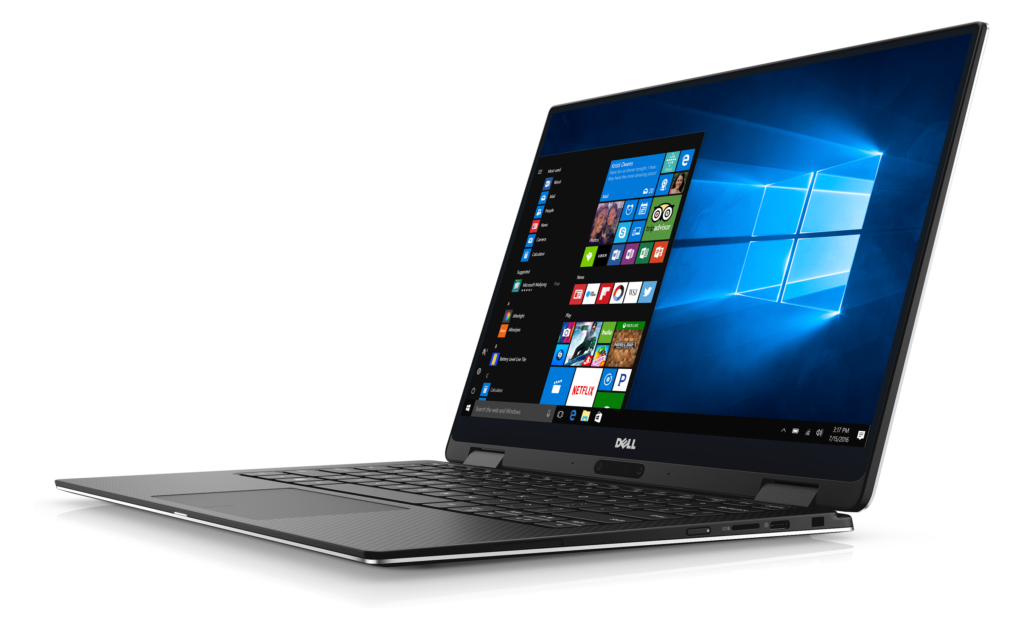 Dell XPS 13 (2019) | 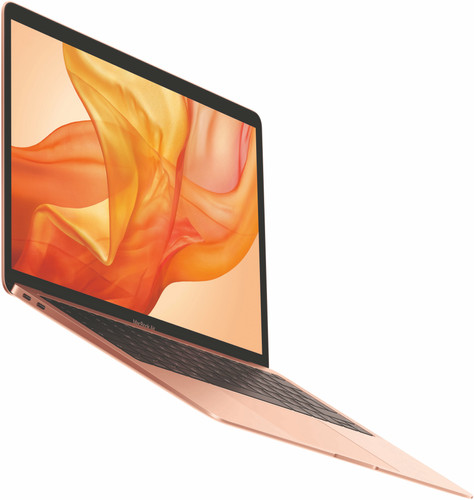 MacBook Air (2019) | 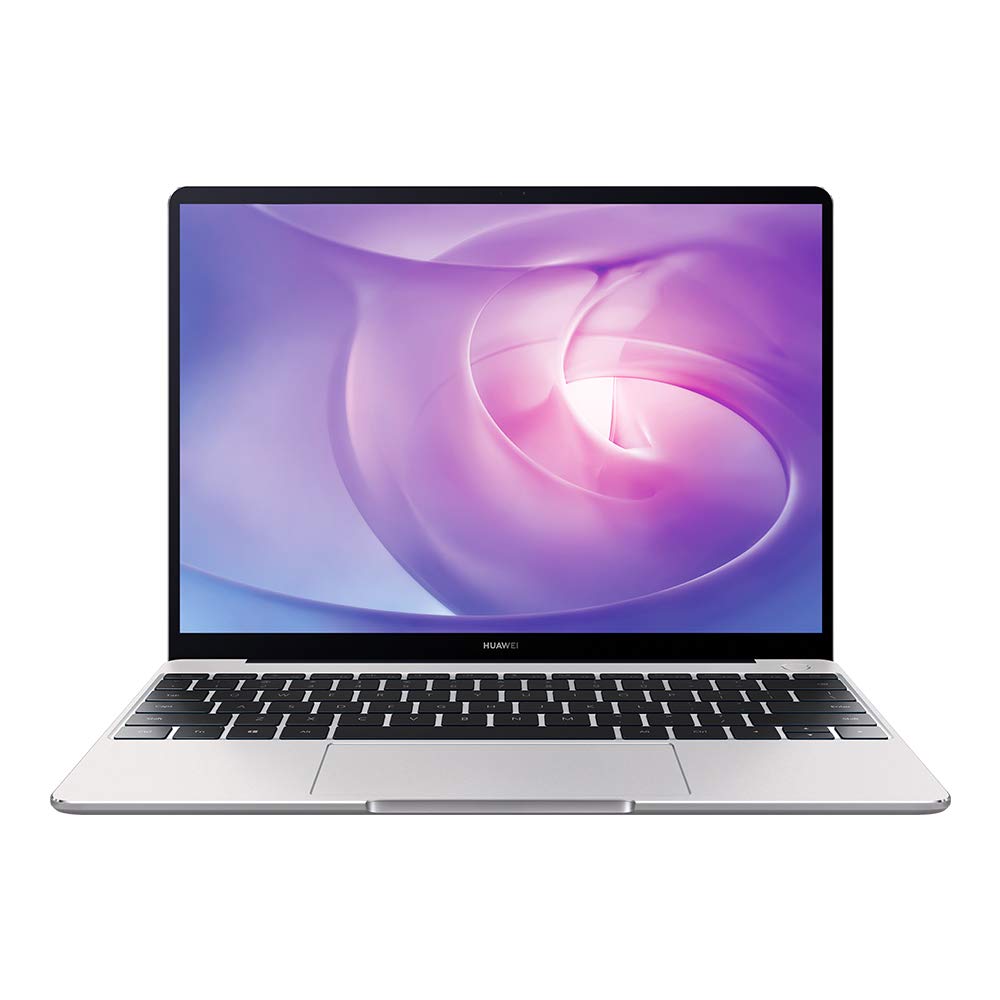 Huawei MateBook 13 | 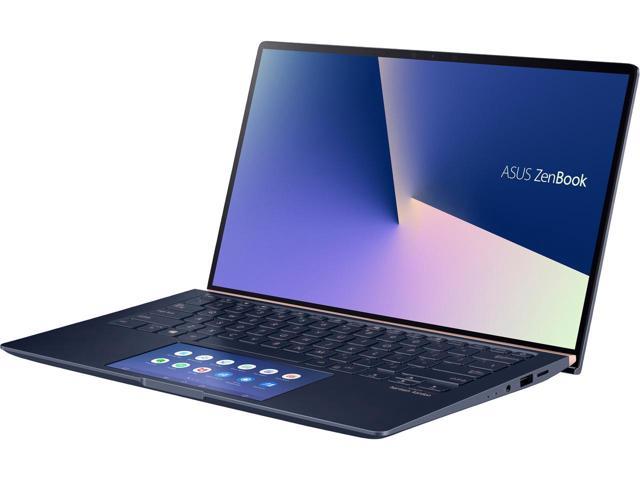 Asus ZenBook UX333 Asus ZenBook UX333 | 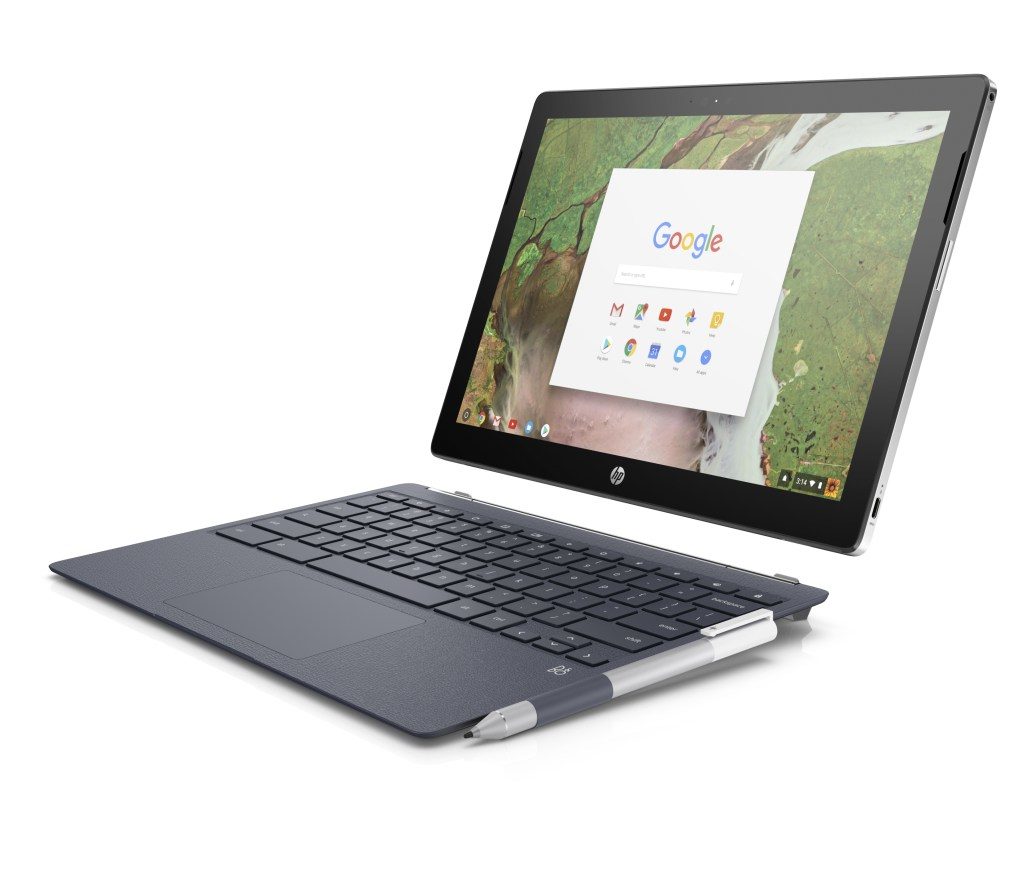
HP Chrome | |
| Processor | 8th Generation Intel® Core™ i5-8250U Processor (6M Cache, up to 3.4 GHz) 8th Generation Intel® Core™ i7-8550U Processor (8M Cache, up to 4.0 GHz) | 1.6GHz dual-core Intel Core i5, Turbo Boost up to 3.6GHz, with 4MB L3 cache | 8th Gen Intel Core i5-8265U processor. Baseband: 1.5 GHz. Single-core: 4.6 GHz; Dual-core: 4.5 GHz’ Quad-core: 4.1 GHz | Intel® Core™ i7-8565U processor
1.8GHz quad-core with Turbo Boost (up to 4.6GHz) and 8MB cache Intel® Core™ i5-8265U processor 1.6GHz quad-core with Turbo Boost (up to 3.9GHz) and 6MB cache Intel® Core™ i3-8145U processor 2.1GHz dual-core with Turbo Boost (up to 3.9GHz) and 4MB cache | Intel® Core™ m3-7Y30 (1 GHz base frequency, up to 2.6 GHz with Intel® Turbo Boost Technology, 4 MB cache, 2 cores) |
| Color | Platinum Silver, Frost, and Rose Gold | Gold
Space Grey, Silver | Space gray | Royal Blue, Icicle Silver | HP matte finish in ceramic white and oxford blue |
| Storage | 4-16GB LPDDR3 RAM
128GB Solid State Drive | 8GB of 2133MHz LPDDR3 onboard memory
Configurable to 16GB of memory 128GB PCIe-based SSD Configurable to 256GB, 512GB, or 1TB SSD 256GB PCIe-based SSD Configurable to 512GB or 1TB SSD
| 256 GB SSD
512 GB SSD | 8GB 2133MHz LPDDR3 onboard
1TB PCIe® 3.0 x4 SSD 512GB / 256GB PCIe® 3.0 x2 SSD | 32 GB eMMC |
| Display | 13.3″ FHD AG (1920 x 1080) InfinityEdge display, Silver machined aluminum 13.3″ QHD+ (3200 x 1800) InfinityEdge touch display, Silver machined aluminum 13.3″ QHD+ (3200 x 1800) InfinityEdge touch display, Rose Gold machined aluminum | Retina display
13.3-inch (diagonal) LED-backlit display with IPS technology; 2560-by-1600 native resolution at 227 pixels per inch with support for millions of colors Supported scaled resolutions: 1680 by 1050 1440 by 900 1024 by 640 16:10 aspect ratio True Tone technology | Size: 13 inches
Resolution: 2, 160 x 1440, 200 PPI | 13.3” LED-backlit FHD (1920 x 1080) 16:9 standard display
13.3” LED-backlit FHD (1920 x 1080) 16:9 anti-glare display Four-way frameless NanoEdge design with 95% screen-to-body ratio 2.8mm-thin side bezel and 3.3mm bottom bezel1 Wide 100% sRGB color gamut 178° wide-view technology | 12.3″ diagonal 2K WLED-backlit touch screen (2400 x 1600) |
| Graphics | 1080p or 4K (both with Dolby Vision)
Intel UHD 620 | Intel UHD Graphics 617
Support for Thunderbolt 3–enabled external graphics processors (eGPUs) | Card Type: NVIDIA GeForce MX150 based on the load
Resolution: 4096 x 2304 Graphics memory: 2 GB | Integrated Intel® UHD Graphics 620 | Intel® HD Graphics 615 Integrated |
| Wireless | Killer™ 1535 Wireless-AC 2×2 + Bluetooth 4.1 Miracast™ capable Intel® Smart Connect Technology | 802.11ac Wi-Fi wireless networking
IEEE 802.11a/b/g/n compatible
| Bluetooth
WIFI | Dual-band 802.11ac gigabit-class Wi-Fi
Bluetooth Bluetooth® 5.0
| Intel® 802.11b/g/n/ac (2×2) Wi-Fi® and Bluetooth® 4.2 Combo |
| Ports | Ports (PRTS) 2 USB 3.0 – 1 w/Power Delivery 1 Headset jack 1 Noble lock slot 1 Thunderbolt™ 3 (2 lanes of PCI Express Gen 3) supports: Power Delivery, Thunderbolt 3 (40Gbps bi-directional), USB 3.1 Gen 2 (10Gbps), VGA, HDMI, Ethernet, and USB-A via Dell Adapter (sold separately) | Two Thunderbolt 3 (USB-C) ports
3.55 mm Audio Jack | The two-in-one power button and touch fingerprint sensor
USB C port (3) 3.55 mm headphone jack and microphone 2 in 1 jack
| 3.5mm headphone jack
| 1 multi-format SD media card reader
1 headphone/microphone combo; 2 USB 3.0 Type-C™ Gen 1 |
| Weight | 1.2Kg non-touch display,
1.29Kg touch display | 1.25kg | 1.3 kg | With anti-glare display: Approx. 1.09kg
With standard display: Approx. 1.19kg
| 0.73 kg (tablet); 1.39 kg (tablet and base |
| Size | 7.8 × 11.9 × 0.3 inches | Height: 0.41–1.56cm
Width: 30.41cm Depth: 21.24cm
| 286 m x 211 x 149 mm | Height: 1.69cm (0.67 inches)
Width: 30.2cm (11.89 inches) Depth: 18.9cm (7.44 inches) | 29.2 x 21.14 x 0.82 cm |
| Keyboard | Full size, backlit chiclet keyboard; 1.3mm travel | 78 (U.S.) or 79 (ISO) individual LED-backlit keys, including 12 function keys and 4 arrow keys
Ambient light sensor Force Touch trackpad for precise cursor control and pressure-sensing capabilities; enables Force clicks, accelerators, pressure-sensitive drawing, and Multi-Touch gestures
| Backlit keyboard, chiclet keyboard, full-sized keyboard.
Material: plastic | Full-size backlit, with 1.4mm key travel
Touchpad Glass-covered with integrated NumberPad; intelligent palm-rejection Precision Touchpad (PTP) technology supports up to four-finger smart gestures | Full-size island-style keyboard |
| Battery | 4-Cell Battery, 52 Whr (Integrated)
Non-4k display: 12 hours and 22 minutes 4K: 7 hours and 50 minutes | Up to 12 hours wireless web
Up to 13 hours iTunes movie playback Up to 30 days of standby time Built-in 49.9‑watt-hour lithium‑polymer battery 30W USB-C Power Adapter; USB-C power port | Battery Material: Lithium polymer
Battery Capacity: 41.8 Wh (3,670 [email protected] V) Charging Time: It takes 15 minutes to charge the battery level, can normal use 2.5 hours | Up to 14 hours battery life3
50Wh 3-cell lithium-polymer battery 45W power adapter | 48Wh, rated to 10.5 hours. |
| Price
MSRP | Starts at $849.00 up to $2,499.00 | Starts at $1,099.00 | Starts at $930.34 | Starts at $999.99 | Starts at $599.99 |
| Remarkable feature |
Cutting edge 8th-Gen Intel Core i7-8565U processor; Infinity display; Webcam has been relocated on the top of the screen; Thinnest bezel on a laptop to date; High-performance and long battery life | Equipped with powerful processor;
Highest retina display on a MacBook; Equipped with a 720p FaceTime HD webcam |
Ultra-thin design; Full view display; Equipped with a 2,160 x 1,440 screen resolution; Highly responsive touchscreen with fingerprint coating keeps the screen smudge-free | Nearly borderless display;
Great battery life; Equipped with a touchpad; Touchpad doubles as a numeric keypad | Responsive touchscreen;
Equipped with two cameras; Respectable battery life; Uncompromising convertibility |
The Details
Dell XPS 13
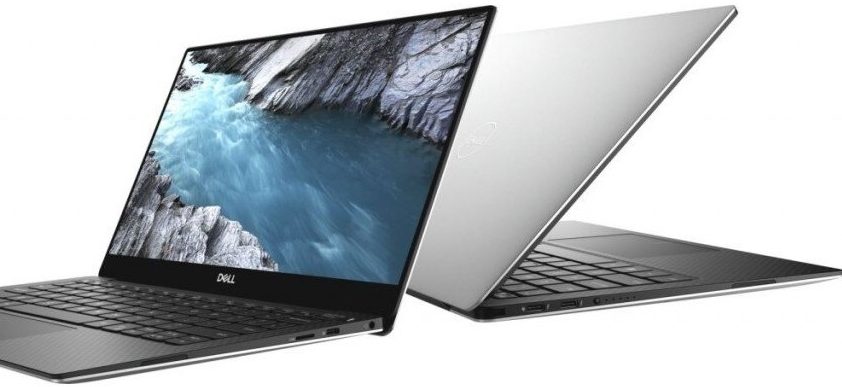
Watch: Dell XPS 13
Dell XPS 13 is a state-of-the-art laptop that is one of the best windows ultraportable laptops around. It is built out of smooth aluminum with a minimalistic and sophisticated engineering which features thin screen bezels. With the elegant design and durable material, it surprising weighs 2.7 pounds only. The inlaid Dell logo is the only light source behind the screen. On the underside of the device are two rubbery grips, air vents, and branding. The palm rest is made of white intricately woven glass fiber. While the screen and keyboard are connected through a torque hinge.
This unit, while staying true to Dell’s mission to deliver new technologies to people around the world, is redesign of the previous model. It promises to be brighter and smoother with the camera at its rightful place. On the previous model, Dell XPS 2018, the camera was placed below the screen and it caused an awkward camera angle. Those who owned XPS 13 2018 was particularly critical about this feature. However, with this new model, Dell transferred the camera on top of the screen, where it should be. Previously, placing the camera on top was prevented by the thin screen bezels. Thanks to the invention of smaller cameras, placement is now on its ideal spot. The camera itself is a small 720p webcam which is 2.25 mm wide. It is the smallest webcam yet. Furthermore, Dell even managed to make the screen bezel even 23% thinner for an XPS 13.
Specifications
The main source of Dell’s success is its superior laptop specifications. This unit is equipped with an 8th generation intel core. Depending on your needs, you can choose an Intel Core i3, i5, or i7. Higher processor means a more seamless laptop experience. It is also known to equip its laptop with Dolby vision. This feature is the gold standard of HDR display technology and helps the XPS 13 handle brighter highlights and darker levels of black. Colorful images pop off the screen with accuracy, vibrancy, and contrast. Screen resolution can reach up to a spectacular 4K, a feature that many enjoys. The full-size backlit chiclet keyboard deck is designed with woven carbon fiber and has a very good balance between travel, firmness, and thinness.
As a quality service, the software allows the user to manipulate data traffic. The card prioritizes games and streaming videos. It ensures fluid audio and video streams and provides low latency times when loading games. Low latency is a computer network that optimizes the process of very high volume data with minimum delay. This provides for a highly responsive interface that is important when playing online games.
Price would depend on the unit’s processors and storage space. For the XPS 13, the base price is at $899. This model offers an Intel Core i3, a 4 GB RAM, and a 128 GB SSD. You can upgrade to the $1209 model which is loaded with an intel core i5, 6 GB of RAM and a 256 GB storage. This unit is recommended for better performance. If you want to have a larger storage space, you can pay an additional $600 for a 2 TB SSD.
| PROS | CONS |
| Performance | Below-average battery life for higher configurations |
| Infinity-edge bezels with a webcam on top of the screen | No USB A or HDMI connectivity |
| Resolution can reach 4k | Units with higher configurations are expensive |
| Excellent keyboard | Does not support windows hello facial log in |
Our Verdict

Price

Processor

Display
 Storage
Storage
 Build
Build
 OVERALL
OVERALL
MacBook Air (2019)
Watch: MacBook Air 2019
A laptop recommendation list would not be complete without listing an Apple device. The MacBook Air 2019 is a sleek and elegant machine made of recycled aluminum sporting the iconic design of Apple’s MacBook Pro. It weighs 2.8 pounds and is 0.2-0.6 inches thick, which is heavier than the Dell XPS 13 2019. It is the most affordable MacBook to date and is a good entry-level computer for those who are just starting with Apple products. It is also a model that addresses the ongoing keyboard issues related to Apple’s butterfly keyboards and features a price reduction. The most remarkable new feature is the TouchID integrated into the device. Your fingerprint will serve as your password, which promises a tighter security measure.
Like most laptops, the newest MacBook Air is equipped with an 8th generation i5-8210Y CPU with an 8 GB RAM and 128 GB of SSD storage. If you want to upgrade to larger storage capacity, you will have to add $200. The MacBook Air 2019 starts at $1,099. This is $100 cheaper than the previous model and when compared to other Apple products, this is the cheapest model. If you want more speed, you can upgrade your RAM to a 16GB for another $200. Out of the box, the device includes a 1.6GHz dual-core with a Turbo Boost up to 3.6GHz and a 4MB L3 cache. The turbo boost feature increases the performance of the CPU of your machine based on workload. It can go to 3.6 GHz and is responsible for managing cores to keep the heat produced at a minimum level.
Specifications
Apple products are known for its retina display. This MacBook, like Apple’s other units, is equipped with an astounding retina display combined with Apple’s true tone display technology. The unit features a 13.3 inch (diagonal) LED-backlit display with IPS technology display. It can also go with 2560 x 1600 native resolution at 227 pixels per inch. With a pane that produces 343 nits, it is impressively bright. This is very close to the 346 nits laptop average. Intel Graphics 617 powers its graphics and include a support for thunderbolt 3-enabled external graphics processors (eGPUs).
Even though some desktops have been offering this technology for a long time, Apple’s true tone technology is an innovation for apple products. It has been featured in some of its smartphones and as well as its flagship laptops. The true tone technology feature sensors that measure the ambient light color and brightness and then adjusts its display to keep the color accurate. It corrects white point and illumination based on your environmental lighting.
Since butterfly keyboards were introduced in 2016, Apple’s keyboards remained as it is. It is shallow and loud when used. Beneath each key, there are home switches that minimize thickness. Users have complained about Apple’s butterfly keyboard for the past years but still, there are no design changes. However, Apple assures users that it will tweak the keyboard mechanism. On top of that, all MacBook will be eligible for Apple’s Keyboard Service Program. It has been called the worst design decision because of its failure when small particles like crumbs enter or if the laptop heats up. Apple says that these problems have been addressed in 2019 models. The new models now include scissors-style key switches. Despite this shortcoming, it still provides for a decent typing experience.
Apart from WIFI connectivity, the unit also packs Bluetooth 4.2 wireless technology. While its wireless connectivity might look astounding especially for WIFI connection, its ports, on the other hand, are limited in number. Apple has not changed this feature yet even though customers have expressed their concerns on this limitation. That being said, the unit has two Thunderbolt 3 (USB-C) ports with support for charging, DisplayPort, Thunderbolt (up to 40Gbps), USB-C 3.1 Gen 2 (up to 10Gbps).
| PROS | CONS |
| Thin and light | Limited port selection |
| Excellent design and Build Quality | Butterfly keyboard |
| Long battery life | Underwhelming professor performance |
| High-resolution screen | Other laptops have thinner bezels |
Our Verdict

Price

Processor

Display

Storage

Build

OVERALL
Huawei MateBook 13
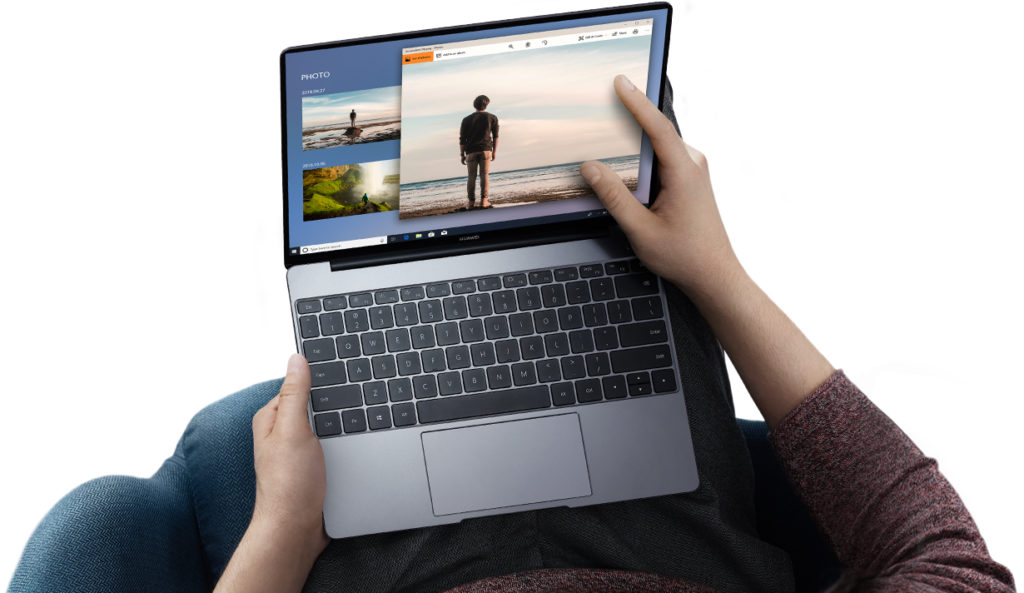
Watch: Huawei MateBook 13
The Huawei MateBook 13 is a third-generation device and a new unit from Huawei. It is a 13-inch laptop designed with a matte finish that prevents fingerprints and smudges combined with a well-made and solid body. It takes a lot of inspiration from the MacBook 12 and MacBook Air. However, what makes this model different is that it improved upon what the Apple MacBook lacks, and made it even better. While it is thin and light, it is astounding how it managed to include great hardware. There are a lot of similarities between the MateBook 13 and the MacBook so much so that the MateBook can be considered as the MacBook for windows.
Surprisingly, the Huawei MateBook 13 is equipped with a great system that can even make it act as a substitute for a desktop for some people. Some reviews say that the CPU is more powerful than some of the gaming PCs in the past. It is small but powerful. Although you have to buy heat-dissipating fans for it. You can choose different kinds of units based on what you want for a laptop. The MateBook 13 may come with an 8th Gen Intel® Core™ i5-8265U processor with a baseband of 1.6 GHz and a single-core at 3.9 GHz. There is also a Dual-core version which is at 3.9 GHz, and a Quad-core at 3.7 GHz.
It is powered by NVIDIA® GeForce MX150, a technology which prepares your laptop for work and play. You can get up to 4x faster performance when using photo and video-editing applications. You can also get a smoother gaming experience. Moreover, this gives the user a balance between battery life and performance.
Specifications
The MateBook 13 has a 13-inch display with a pixel resolution of 2,160 x 1,440. Its maximum output resolution is 4,096 x 2,304. It is uncommon for laptops to have a 3:2 aspect ratio but the MateBook 13 is built with this feature. This makes it ideal for spreadsheets and video editing. The downside to this, however, is the significant dead space at the top and bottom of the screen. Like the other laptops mentioned on this list, the MateBook 13 comes with a 256 GB SSD with 8GB RAM. You can also get a unit with a 512 GB storage. Apart from this, it has an LPDDR3 (Low Power Double Data Rate 3) feature. This means the machine takes less power and has more saving features. The RAM has a clock speed of 2133 MHz.
Comparing its hardware on the other hand, the MateBook 13’s backlit and is a chiclet keyboard is disappointingly made of plastic. However, compared to the MacBook Air’s butterfly keyboard, it offers a 1.2 mm travel. When you type the feedback of the keys is springy. It is also spill-resistant, so you don’t have to worry about accidentally spilling your coffee on this laptop. Plus, the one-touch power button doubles as a fingerprint manager. Accessing your device is easier, quicker, and more secure.
A built-in Bluetooth is supported as well as WIFI. It is equipped with the most powerful Bluetooth technology – the 5.0 Bluetooth technology. It has two Left USB-C port, a charging port, a data port, and an audio port. Its data port is the USB-C X2. According to the specification provided by Huawei on their website, the left port supports data transfer and charging, while the right port supports data transfer and DisplayPort.
If you are curious about the MateBook 13 and you want to buy it, you can purchase its entry-level model for $999. This model features an 8th generation core i5 processor with Intel UHD 620 graphics and an 8GB RAM. If you want a version that has a higher processor then you can upgrade your unit to have the i7 processor for $1,299.
| PROS | CONS |
| Powerful performance | The screen is a bit dim |
| Good keyboard | Noisy |
| Nvidia MX150 GPU included in the top-tier model | Short battery life |
| Comes with a free dongle that includes ethernet and extra ports | No USB-A ports |
| Good price | Models only support 8GB RAMs |
Our Verdict

Price

Processor

Display

Storage

Keyboard

Build

OVERALL
Asus ZenBook UX333
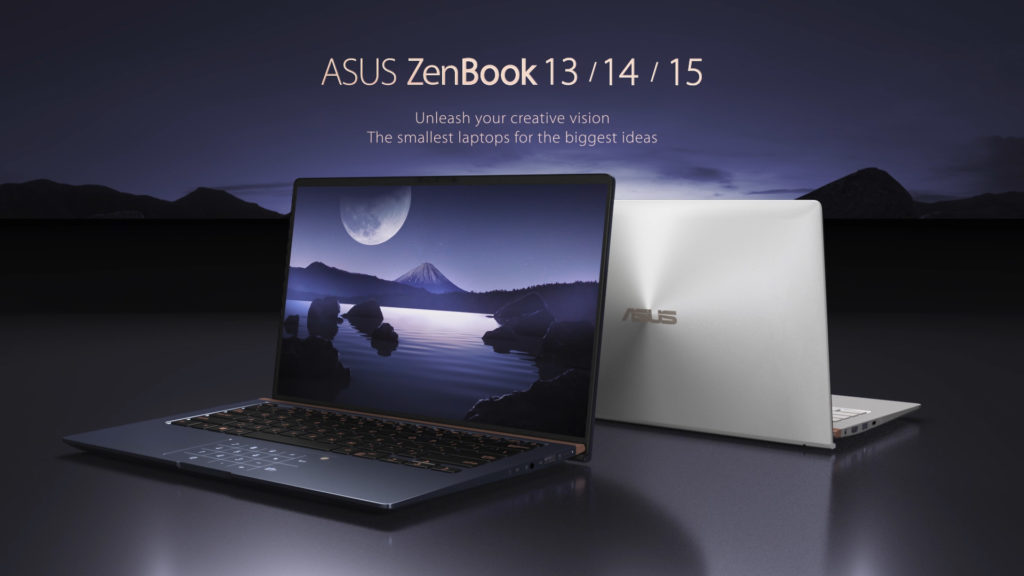
Watch: Asus ZenBook UX333
The Asus ZenBook UX333 is stylish and is good to take anywhere because of its ultraportable design. It boasts as the smallest 13-inch laptop equipped with a frameless NanoEdge display. Asus designed this to make multitasking easier. Since a lot of consumers watch movies or series on their laptops, this makes their entertainment more immersive. The NanoEdge display features an ultra-narrow bezel. By introducing a narrow bezel chin and a hooked ergo lift hinge, the Asus ZenBook UX333 stands out from the crowd. The laptop has a reduced width with an extra wide 18:9 like appearance instead of the typical 16:9. One disadvantage, however, is that the hinge limit is only 143 degrees. The UX333 is the smaller variant of the UX433 but the chassis rigidity of this unit is excellent and is even tougher than the latter.
For those who are always working under the sun, the anti-glare unit is for you. This display allows you to see your screen even under strong light. But, if you prefer brighter laptops, then this might not be the best choice. This is disappointing because although it is equipped with the same Integrated Intel UHD Graphics 620 like the Dell XPS 13. This is significantly brighter than the ZenBook and is even overqualified for the recommended 321 nit brightness. But it compensates with the unit’s gorgeous display. It offers a Full HD resolution which allows fine details to look sharp. You will enjoy watching videos because it has the ASUS Tru2Life Video technology. This is a video enhancement technology similarly used in high-end TVs to make every video frame clearer, more detailed and more realistic. The problem, however, is that icons and screen elements may be too big with window’s default 150% zoom.
Just like other modern laptops, the Asus ZenBook includes an Intel Core i3 processor, i5 and i7. Its system memory is 2.1 GHz dual-core with turbo boost (up to 3.9 GHz) and a 4MB cache. The Intel Core i5 unit has a clock speed of 1.6GHZ quad-core with turbo boost (up to 3.9 GHz) and a 6 MB cache while its i7 has a clock speed of 1.8 GHz quad-core with turbo boost (up to 4.6GHZ) and 8 MB cache.
Specifications
In terms of graphic display, its panel covers 115% of the sRGB spectrum. This is below the 117% premium average but is higher than the MacBook Air which has 109%. Compared to the Dell XPS 13, it still disappoints compared to the latter’s 119%. Moreover, it uses a 178° wide-view technology. This panel is generally considered as the best LCD technology for image quality, color accuracy, and viewing angles. Because of these features, the laptop is suited for tasks that require accurate and consistent color reproduction. Colors are nicely saturated thanks to the ASUS Splendid. This feature can be found in all ASUS laptops. It ensures display panels show identical and accurate using a combination of factory-applied corrections and software tuning.
Watch: A Walk through the Splendid-Four Kinds of Modes
The ZenBook’s keyboard is a full-sized, backlit with an ErgoLift technology. Designed for comfortable typing, the ErgoLift hinge on ZenBook is an innovation in keyboard technology. Some keys in its keyboard layout are cramped. The right shift and delete keys are tiny and the F7 key cycles through 3 levels of backlighting. There is a button in the corner of the touchpad which transforms it into an LED-lit keypad for numeric data entry. When you turn this off, the touchpad slides smoothly but it requires a firmer tap. When typing, the keyboard has a shallow but snappy feel. The keys are tactile. When you type on them even at a fast pace, it’s not loud.
Ease of use is reinforced by the NumberPad, the innovative technology that sets the Asus ZenBook UX333 apart. The numeric keyboard can be accessed by tapping oh the top right corner of the touchpad. This will launch the illuminated NumberPad where you can quickly enter numerical data or do calculations all within the comforts of the touchpad. The TouchPad alone provides a super-smooth, precise touch control which supports multi-gesture setting. Your fingertip movement and distinct taps will be recorded by the software and will intelligently recognize each gesture and different movement.
This unit costs $849, cheaper than the Dell XPS 13 which it shares the same Intel Core i5-8265U processor. For this price, an 8GB of memory, a 256GB solid-state drive, and a 1080p non-touch display is included. It is economical and can be on par with other state-of-the-art laptops at a lower price.
| PROS | CONS |
| Innovative design | The display is glossy and attracts smudges (for standard display) |
| High contrast LCD panels with thin bezels | Dim display |
| Powerful performance | Finicky touchpad |
| Wide range of port selection | No thunderbolt 3 |
Our Verdict

Price

Processor

Display

Storage

Build

OVERALL
HP Chromebook X2
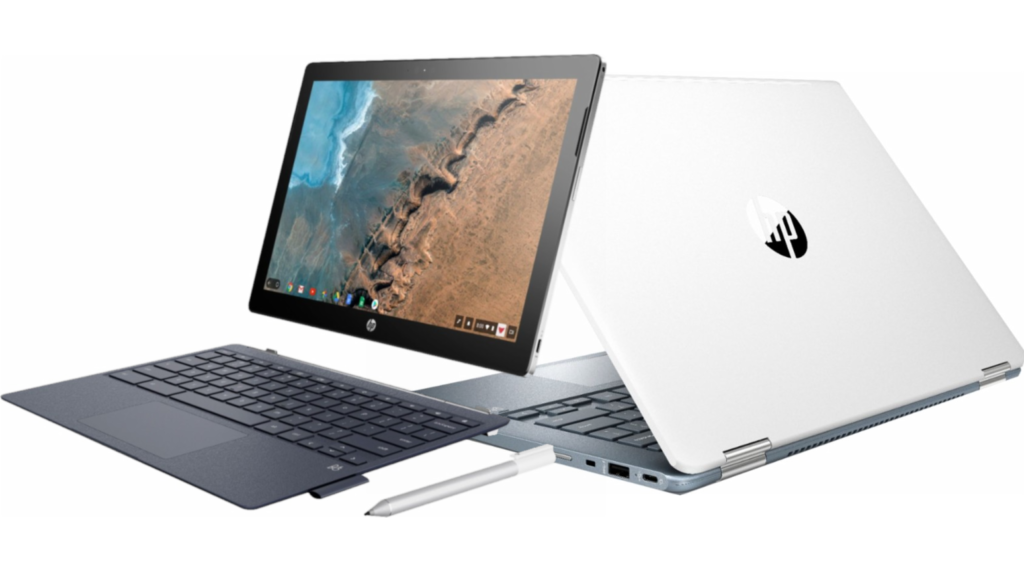
Watch: HP Chromebook X2
The HP Chromebook X2 is a 2-in-1 laptop that features a detachable anodized aluminum tablet upper body attached to a rubber, leather-textured keyboard. Two tech giants, HP and Google, worked together to design this device in the shift toward a computer that adapts well for web applications. This model incorporates the benefits of off-site data storage called the Cloud. It is at the heart of the HP Chromebook technology and is useful for those who deal with a lot of data all the time. In this day and age, it is practical to store files offsite to ensure that there is a backup copy if ever accidents happen. This is also helpful if you do not want your laptop to get clogged by too many files. Since Chromebook is optimized for the web, this offers a robust PC experience with an OS that reduces the strain on the computer’s memory.
The hinged convertible design allows for four useful modes. The tablet can be reversed, used in movie mode, and clamshell mode. Also, it can be closed into the tablet and inserted into the keyboard base. However, in its clamshell mode, the laptop is wobbly. What is good though is upon purchase, the bundle includes the keyboard and the active pen.
Unlike the previous devices discussed, this Chromebook is powered by the Intel Core M series. It has a 1 GHz base frequency up to 2.6 GHz Intel turbo boost technology. It has a cache memory of 4 MB and is dual-core. If you are a student or a professional that doesn’t deal with work that uses heavy software, then this is for you. The processor is capable and is sufficient for the target consumers, although it struggles under heavy load.
Specifications
One of the features of this 2-in-1 laptop is its detachable upper body. There is no button to separate it and it can also be easily reattached thanks to the magnets that are strong enough to keep the two parts together. It is equipped with a 12.3-inch diagonal 2K WLED-backlit touchscreen with a 2,400 x 1,600 resolution. The display is powered by the Intel HD Graphics 615. This is a low-end integrated graphics unit that produces inferior display resolution.
The HP Chromebook only comes with a 32 GB, which is the standard size and drives for Chromebooks. Sadly, this is not the fastest memory, but it can keep up with what the system offers. Unlike the other laptops mentioned here, it runs on Chrome OS and does need a large storage for a seamless experience. Additionally, the unit does not demand the same performance as you would expect high-end laptops provide. Having an onboard 4 GB SDRAM, you cannot upgrade to a unit with higher RAM. Keep in mind that you will be relying on your cloud storage most of the time because a 32 GB storage may not be enough.
The unit is equipped with a nicely made full-size island-style keyboard covered with textured rubberized plastic. For this detachable Chromebook, price starts at $599.99 and falls in the midrange within the Chromebook line.
| PROS | CONS |
| Outstanding build quality | Heavy when attached to the keyboard |
| Very good battery life | The screen is a little wobbly in laptop mode |
| Great performance | No backlit keyboard |
| Excellent keyboard base | The processor is not the fastest |
Our Verdict

Price

Processor

Display

Storage

Build

OVERALL